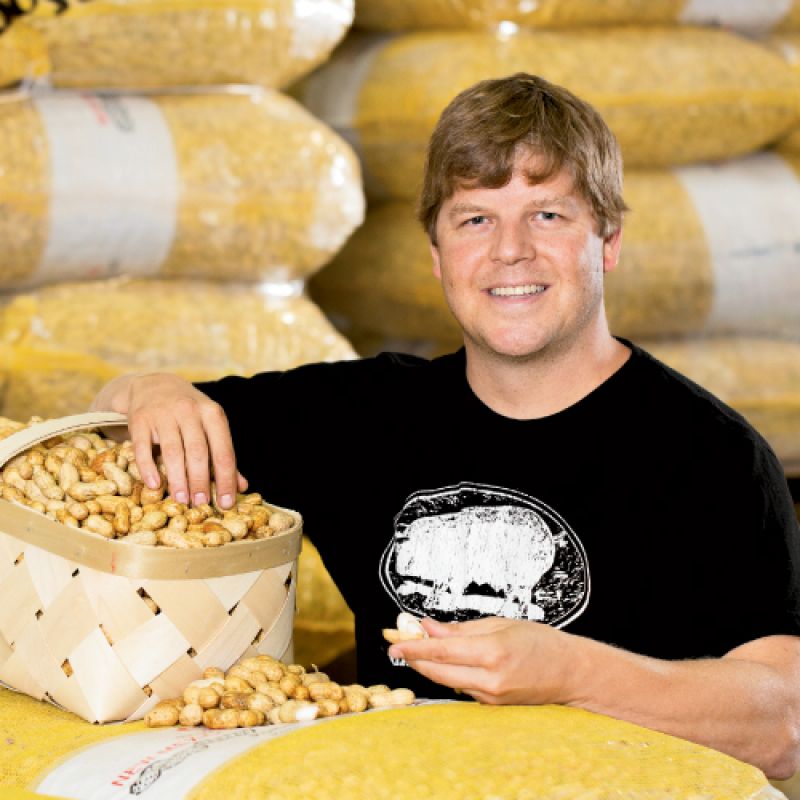
While most Southerners know our peanuts are harvested between July and October, many are fuzzy about the difference between the green and raw stages. “Green peanuts are fresh out of the ground,” explains Aaron Siegel, owner and pitmaster of Fiery Ron’s Home Team BBQ, “with kernels that are almost white.” Their high moisture content makes them very perishable, so they must be refrigerated, and even then their shelf life is less than two weeks. If you purchase green peanuts, spread them out on a baking sheet before refrigerating. Give them as much air circulation as possible; do not pack them up in a tight container.
“Boiled peanuts came about as a method to prolong the life of the green peanut,” Siegel continues. “Since a peanut is a legume, not a nut, you can boil it or cook it like you would any other legume.” Raw peanuts, on the other hand, have been air-dried to reduce their moisture content and can be refrigerated for up to a year in a tightly closed, moisture-proof container, or frozen or canned.
Ample availability of the regional harvest gave Siegel the opportunity to move the goober beyond boiled in three signature dishes. In his succotash with green peanuts, he pairs them with butterbeans, cooking them in a fortified smoky broth before combining them with “meaty, jelly-fat tomatoes and vibrant squash.”
Fried green peanuts make a fine addition to Siegel’s smoked duck salad. “If fried as directed,” he says, “the green peanuts retain a rich interior reminiscent of a boiled peanut; their skins add a crispy outer layer. They are complemented by the acidity of the soft cheese, the smokiness of the duck with its rendered bacon-like fat layer, and the sweetness of the figs.”
Siegel switches things up for his bananas Foster by using roasted peanuts to make the peanut brittle that adds a savory crunch to the customarily creamy dessert. Temperature control is the key to success when making brittle, he advises. This brittle is paler than the commercial variety, so you can’t go by color.
The green and raw peanuts used at Home Team BBQ come from Limehouse Produce or GrowFood Carolina, but both can be found at area farmers markets. “My favorite is the Saturday Charleston Farmers Market,” says Siegel. “If you get there early, you will have your pick of everything.”
Soon there will be a new source for locally grown peanuts with Lowcountry heritage. In their mission to restore the flavors of the antebellum Southern kitchen, historian Dr. David Shields and Anson Mills founder Glenn Roberts have tracked down seeds for the Carolina African runner peanut. The Clemson Research Lab on Savannah Highway is tending the restoration. Stay tuned.
Dishing It Up with Chef Aaron Siegel
----------------------------------------
Restaurant: Fiery Ron’s Home Team BBQ
First F&B gig: An internship under chef Kevin Rathbun at Buckhead Life Restaurant Group’s Nava, working hot apps and then as a line cook
Education: Bachelor’s degree in English from University of Georgia in ’96, Associate’s degree in occupational studies from Culinary Institute of America in ’98
Favorite local ingredient: “Carolina Gold rice is such a unique and versatile heirloom ingredient. I love to use it in casseroles or risotto.”
Recipe you’ll never share: Macaroni and cheese